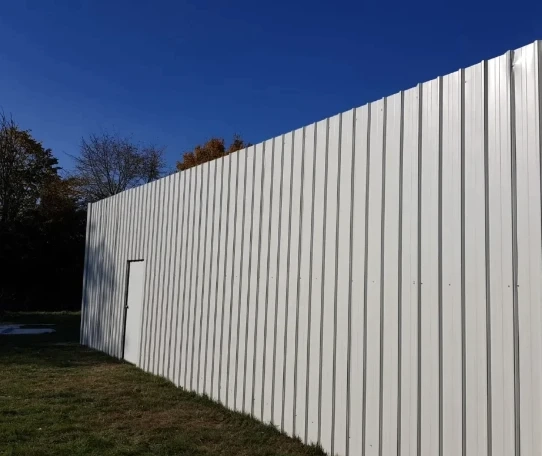In the dynamic landscape of modern architecture and interior design, the challenge of managing acoustics in open spaces has become increasingly pronounced. Open-concept layouts offer flexibility and a sense of expansiveness, but they often come at the cost of sound control. This is where thoughtful wall partitions step in, providing a solution to enhance acoustics without sacrificing the benefits of an open environment.
Understanding the Acoustic Challenge
Open spaces, whether in offices, homes, or commercial settings, can suffer from sound-related issues such as echoes, reverberation, and a lack of speech privacy. These challenges can negatively impact productivity, communication, and overall comfort within a space. Thoughtful consideration of acoustics is crucial to creating a harmonious environment that supports both collaboration and focused work.
The Role of Wall Partitions in Acoustic Improvement
Wall partitions play a pivotal role in mitigating sound-related challenges. Unlike traditional walls that create complete barriers, modern partitions are designed to strike a balance between openness and effective sound control. Here's how you can use them to enhance acoustics:
1. Material Matters: Choosing the Right Elements
Selecting the appropriate materials for your warehouse wall partitions is the first step in improving acoustics. Consider materials with sound-absorbing properties, such as fabric-covered panels, acoustic glass, or specialized acoustic materials. These options help to dampen sound and reduce reverberation.
2. Strategic Placement: Targeting Sound Hotspots
Identify areas within your space where sound tends to concentrate or bounce excessively. Strategic placement of wall partitions in these locations can help redirect and absorb sound, creating a more balanced acoustic environment. Pay attention to high-traffic areas, meeting spaces, and zones with reflective surfaces.
3. Variable Design: Adapting to Different Acoustic Needs
Recognize that different spaces within your environment may have distinct acoustic requirements. Movable or adjustable wall partitions allow you to adapt the layout based on specific needs. This flexibility is especially valuable in multipurpose areas or offices with diverse work activities.
4. Combining Functionality with Aesthetics
Thoughtful wall partitions not only serve a functional purpose but also contribute to the overall aesthetics of the space. Integrating design elements that absorb sound without compromising visual appeal ensures a holistic approach to acoustics.
5. Creating Acoustic Zones: Tailoring Sound Environments
Divide larger open spaces into smaller acoustic zones by strategically placing wall partitions. This approach allows for the creation of focused work areas, collaboration zones, and quiet retreats, each with its own acoustic characteristics.
6. Technology Integration: Advanced Acoustic Solutions
Explore technological advancements in acoustic design, such as soundproofing materials and integrated sound systems. Some wall partitions come equipped with advanced features to actively manage sound levels, offering a comprehensive solution to acoustic challenges.
7. Collaborative Design Process: Involving Stakeholders
When implementing wall partitions for acoustic improvement, involve stakeholders in the design process. This collaborative approach ensures that the chosen solutions align with the specific needs and preferences of the individuals who will inhabit the space.
Benefits Beyond Sound Control
Improving acoustics with thoughtful wall partitions goes beyond mere sound control. It creates a more comfortable and productive environment by addressing speech privacy concerns, reducing stress levels, and enhancing overall well-being. The integration of these partitions reflects a nuanced approach to design, acknowledging the importance of both visual aesthetics and functional performance.
In conclusion, the strategic use of wall partitions is a powerful tool for enhancing acoustics in open spaces. By choosing the right materials, strategically placing partitions, and embracing a collaborative design process, you can strike the perfect balance between an open, flexible layout and a controlled acoustic environment. With thoughtful consideration and creative solutions, wall partitions become not just functional elements but integral contributors to a harmonious and effective living or working space.


